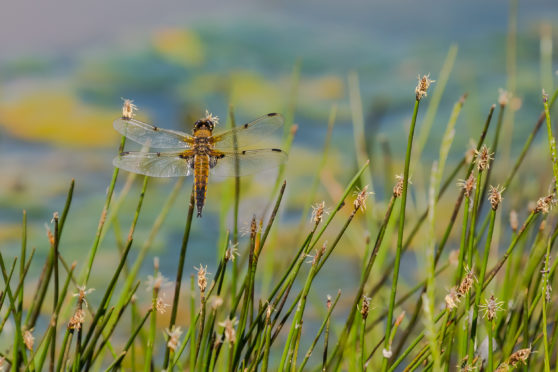It was the poet Alfred Lord Tennyson, and not your columnist (it’s easy, I admit, to get us confused,) who wrote: “Today I saw the dragonfly/Come from the wells where he did lie.”
That was quite well put. Couldn’t have done better myself, particularly as I’d probably have tried to make “dragonfly” rhyme with “pie”, for which I think the subject has little scope.
Another possibility would be: “Today a dragonfly I seen/It landed on my pie and bean(s).” Needs some work, I think.
To be honest, the chances of a dragonfly landing on your pie and beans are remote. You’d have to be outdoors for a start, probably walking through a forest or by a stream and, if you did that with such a repast, you’d probably get bean juice down your front.
However, I have seen dragonflies, and was glad of it. I’d wondered if I’d see any in my neck of the woods. I used to see them by a burn on the shore at my friends’ house up the road. I thought I might get them over my peerie pond.
But, no, I saw my first in the forest, and exulted as it swooped towards me then back up the path then back towards me. I have since read that they are very territorial.
And, boy, are they good at the hovering and giving you the once-over. In my case, the beastie clearly thought I was too tough, mistaking my nose for a large proboscis that could have its eye out, or at least one of its 24,000 compound ocular bits.
Reader’s voice: “He’s been looking up Wikipedia again.” Naw, ah’ve no’. Ah knew that. OK, fair enough, ah didnae. But I give you fair warning: I’m going to be throwing so many dragonfly facts from Wikipedia at you that your dentures will fall into your porridge. Yes, I’m looking at you, madam.
Of course, I wanted to pat the dragonfly on the heid but, to be honest, was a bit feart of it. They’re right big, and this one had yellow and black stripes which usually mean: “You’ll regret it.”
They’re also pretty brutal, as is the way with nature. I wish creatures could be nicer. Quite frankly, I don’t like the way the world is run: kill or be killed; eat or be eaten. As soon as I shuffle off, I’m going to visit the complaints department about it (when I’ll probably also ask to exchange my harp for a Fender Stratocaster).
As you ken fine, dragonflies are hemimetabolous, which is something to do with nymphs, and it says here that they eat midges (yay!) and butterflies (boo!). One species can apparently scoff a whole frog. They don’t touch us, thankfully: too chewy.
I found more dragonflies further on, still sticking to the path, which I thought very civilised of them.
I’m a collector of coincidences and, later that evening, reading in bed, was intrigued to find the Swedish author, Per Olov Enquist, have his semi-fictional character say dragonflies were his favourite creature.
Not sure I’d go that far. I dislike insects as a rule (apart from bees), finding their general behaviour disgraceful. But I’m always thrilled to see a dragonfly/As long as it keeps well away from my pie.











